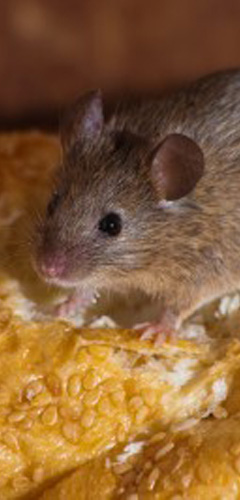- PEST PROBLEMS? CALL US NOW!
- 01865 362053 / 07802 485384
Pest Control for Mice
(Mus Domesticus)
 Hawthorn will show you the best ways to catch and remove mice using the most appropriate methods for your situation. So you want to know how to get rid of mice? - then read on for more information on mouse control..
Hawthorn will show you the best ways to catch and remove mice using the most appropriate methods for your situation. So you want to know how to get rid of mice? - then read on for more information on mouse control..
How do I get rid of mice? How do I catch a mouse? Mouse control? Mouse Removal?
Whatever question you have regarding mice, Hawthorn Pest Control can provide you with the answer. Our pest control team deal with mice on a daily basis. Our methods vary, but catching and removing mice can be a tricky business for the uninitiated. Our pest technicians will determine the best way to catch a mouse depending on the environment via a full on site survey. This will generally be followed by a programme of baiting, mouse traps or other suitable mouse control methods which will be implemented and managed as required. In addition we will provide guidance and advice on how to mouse proof your property ensuring minimum chance of their return.
The house mouse was reportedly found in the UK as early as the 9th Century, although details around how and when remain vague.
House mice can live and breed in houses, buildings and other structures such as garden sheds, which give them protection from cold and wet weather, and where they can access food, water and harbourage.
The house mouse is a slender creature growing up to a maximum of 25g with a pear shaped body 90 mm long and a tail also 90mm. The fur is brown to grey on the back and paler on the body. The tail is dark in colour all over. It has large ears in comparison to its body. The mouse can climb very well and squeeze through holes just 6 mm across, so it can easily enter most homes.
House mice like to know the area where they live and like to familiarise themselves with their home surroundings; but dependent upon other physical factors, this activity is often restricted to a radius of up to 10 metres. They use the same familiar pathways and therefore produce ‘smear marks’ by the continual rubbing of their fur against surfaces.
The first sign of house mice is often the small black droppings, similar in size to a rice grain, which it produces at the rate of about 80 a day. The other main sign of their presence is damage to foods and other objects. Like all rodents, the teeth of the mouse are constantly growing and they will often exercise them by gnawing on timber, wiring, pipe work, etc. Mice tend to eat and sleep in a rather small area, perhaps staying in one house for all their needs with nearly all of their activity being at night.
Mice have a 3 week pregnancy, a 3 week weaning period and become sexually mature 6 - 8 weeks later. Under ideal conditions a new litter of 4 - 8 young can be produced 5 – 8 times per year. However, mice tend to only have a lifespan of 3 – 4 months.
Mice will drink water if available, although they can survive on food with a moisture content of 15%. A mouse will eat up to 20% of their body weight in food each day. The house mice can survive on a relatively poor diets, eating between 3 to 4 grams of food a day and can survive without access to free water, obtaining their daily needs from their food.
House mice are inquisitive and have sporadic and unpredictable feeding habits, feeding from many different sites each night, rather than 1 or 2 sites close to their nest. They can feed on almost anything, but generally prefer cereal-based foods.
Key signs that rats and mice are present in a location include: smell, holes, droppings, runs, smear marks, damage, tracks, nests and dead and/ or live rodents.
Hawthorn Pest Control work with domestic, agricultural and catering businesses to control, manage and eradicate both rats and mice from premises. The methods of rodent control adopted depend on the location and extent of the rodent problem. The most common method is a baiting programme, although on occasions trained dogs may be used.

